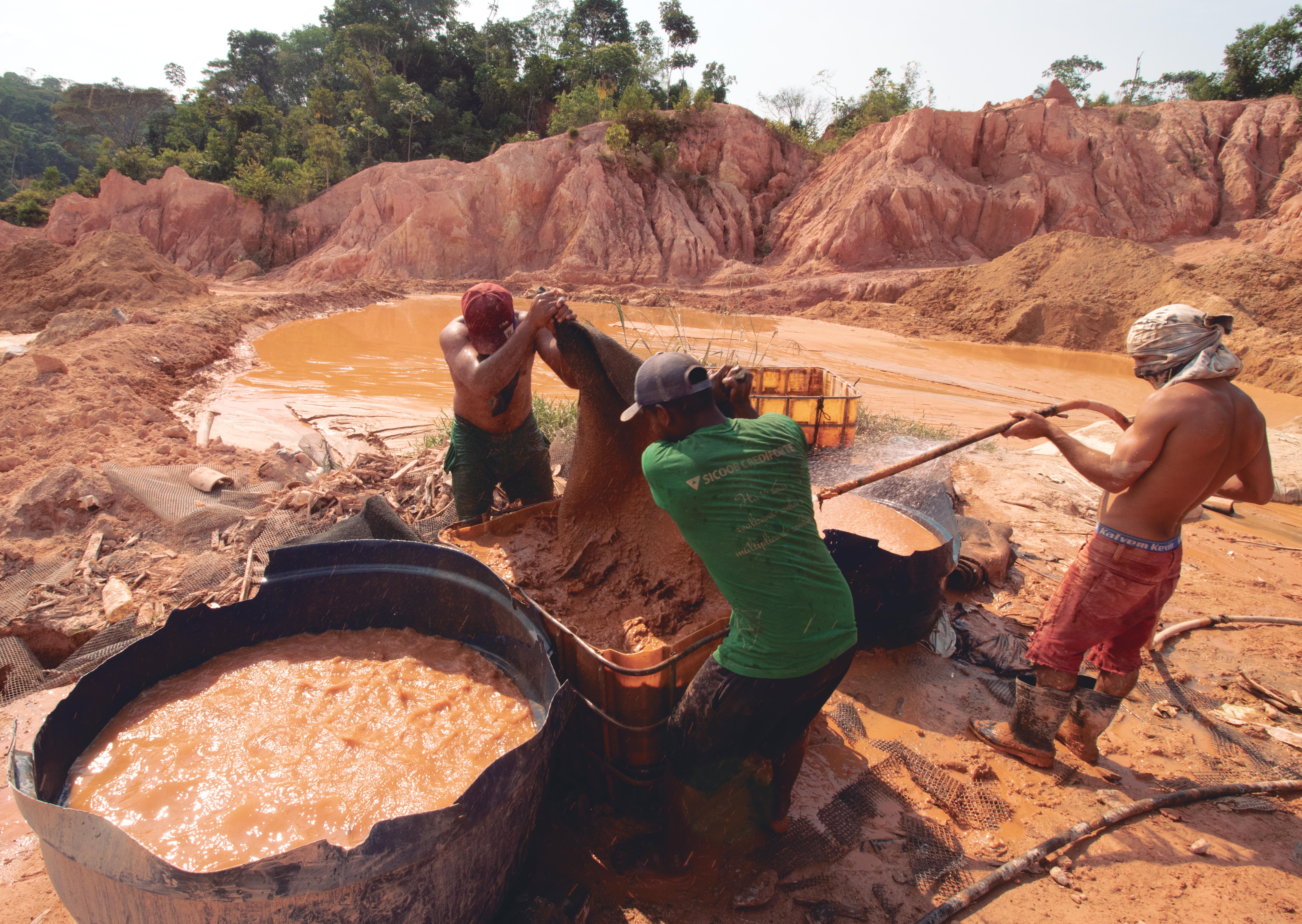
Brasília (Brazil), 15 May 2024 – The Tapajós River runs 840 kilometers through the heart of the Brazilian Amazon, cutting through indigenous territories, national parks, poverty-stricken towns and many of Brazil's small-scale gold mining sites – or garimpos as they are called in Portuguese.
In this environment, where goldmining is often illegal, garimpeiros (miners), both men and women, are subjected to poor and dangerous working conditions. As many as 40 per cent of all gold miners in the region may be victims of human trafficking for forced labour, according to a pioneering study conducted by the United Nations Office on Drugs and Crime (UNODC) in Brazil.
Beyond the figures and numbers, the miners’ lives reveal unique stories of internal migration, estrangement from family, debt bondage, health problems and the persistent dream of striking gold.


“Sometimes the garimpo fails, there's little gold, but the prospector continues to believe that it will get better”, says Clovis, a 53-year-old man. He migrated to Pará from another state in Brazil with his family as a child and worked in numerous jobs before settling, still as a young man, in gold mining. It became his life project and he got used to living in the rainforest.
Suffering from a serious heart condition, Clovis currently lives in a public shelter in the town of Itaituba, where he is receiving medical treatment.
But as soon as his condition improves, he says, he will go out searching for gold again.
Francisco, a 57-year-old, is also an internal migrant. He got interested in gold mining after hearing stories from friends. They led him to believe that gold mining would easily provide the resources he needed to get the sound equipment he wanted upon his return to Maranhão, his native state.
However, 34 years have now passed with no communication between Francisco and his family.
“I got into mining and thought it was a game where men went around the caves opening leaves, removing the sludge and finding gold,” he says. “It is different from what I thought.
“I suffered a lot of losses. I had gold but it was in other people's hands, though I still enjoyed mining. I earned the money, but I couldn't get it. I’m still here today.”


Men are usually involved in activities directly related to gold extraction, whereas women are present in the garimpos in support roles, such as cooks. In this social context of remote and male-centered mining communities, women are also vulnerable to sexual exploitation in prostitution.
Maria de Fátima, another internal migrant from Maranhão, did not have a birth certificate until she was almost a teenager: her age was estimated based on visual criteria by the notary at the registry office, an event that had a strong emotional impact on her life. Abandoned by her mother around the age of 12, Maria de Fátima was informally adopted and suffered abuse and domestic violence.
Following an invitation from a friend with ample experience of travelling around brothel routes in the garimpo areas, young Maria de Fátima left for the Tapajós region. Avoiding activities related to prostitution, she got a job as a cook and has been moving around different mining communities since then.
Iranir, a 57-year-old woman, started mining at the age of 14. She wanted money to help her family escape the poverty they faced at home. “Without a cent in my pocket and with just two sets of clothes”, Iranir went alone to the garimpos.
After six years of working as a cook, she bought a rabeta (motorized canoe) to transport food and supplies to the work sites. Iranir became a boatwoman – a job predominantly carried out by men in the region.
Currently, Iranir lives in one of the few houses on the banks of the Crepori River, a tributary of the Tapajós, where she owns a modest bar that serves as a stopping point for garimpeiros travelling up and down the river. She is a well-known and respected figure in these areas.
“I have suffered a lot”, says Iranir, summarizing her life trajectory.

The Tapajós Project aims to determine the prevalence and drivers of human trafficking for forced labour in the gold mining sector in the Tapajós basin in Pará, Brazil, and to implement evidence-based interventions to reduce and prevent this crime in the region.
The project is being implemented by the UNODC Office in Brazil, the Human Trafficking and Migrant Smuggling Section and the Research and Trend Analysis Branch and is funded by the Office to Monitor and Combat Trafficking in Persons of the Department of State of the United States of America.
Images Copyright: Carlos Bandeira Jr./UNODC